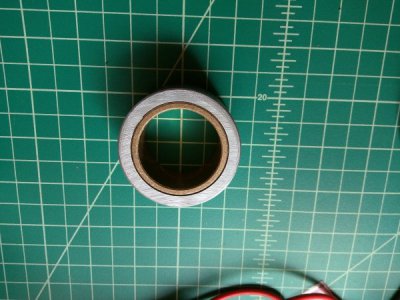- Joined
- Apr 28, 2016
- Messages
- 86
I made my first serious attempt at boring last week on a supremely under-powered and insufficiently rigid lathe. It took ~4 hours (yes, hours of listening to a belt slipping) to bore out a ~1.75" ID / 1" depth in 1018 (and I over ran my tolerance, so I get to make it again...).
I started the initial bore with a #5 center drill, went full depth with a 17/64th split point (my 1/4th gets a lot of use), and then a 1/2 split point before changing over to ccmt insert boring bars. After all of this, someone pointed out that it would have been much faster to hog out the bulk of the ID using a mill by plunge cutting or using a rotary table. In my pathological lathe case, this certainly would have been the case as the mill I have access two has substantively more power.
However, I'm curious as to what would be the correct stock "preparation" if a mill and lathe had equal power. (I'm ignoring the obvious solution of starting from precision tube stock). The linear speed (SFM) starts at effectively zero on the axis of rotation and increases as the ID enlarges. Is twist drill faster than a boring on a small ID do to the have two cutting edges instead of one? Thus, an end mill with 4 or more flutes will hog out faster due to the addition surfaces. If that is true, does it make sense to use center cutting end mills in the tail stock over something like a deming drill? Is there an ID size at which a single edge boring has an advantage?

I started the initial bore with a #5 center drill, went full depth with a 17/64th split point (my 1/4th gets a lot of use), and then a 1/2 split point before changing over to ccmt insert boring bars. After all of this, someone pointed out that it would have been much faster to hog out the bulk of the ID using a mill by plunge cutting or using a rotary table. In my pathological lathe case, this certainly would have been the case as the mill I have access two has substantively more power.
However, I'm curious as to what would be the correct stock "preparation" if a mill and lathe had equal power. (I'm ignoring the obvious solution of starting from precision tube stock). The linear speed (SFM) starts at effectively zero on the axis of rotation and increases as the ID enlarges. Is twist drill faster than a boring on a small ID do to the have two cutting edges instead of one? Thus, an end mill with 4 or more flutes will hog out faster due to the addition surfaces. If that is true, does it make sense to use center cutting end mills in the tail stock over something like a deming drill? Is there an ID size at which a single edge boring has an advantage?


